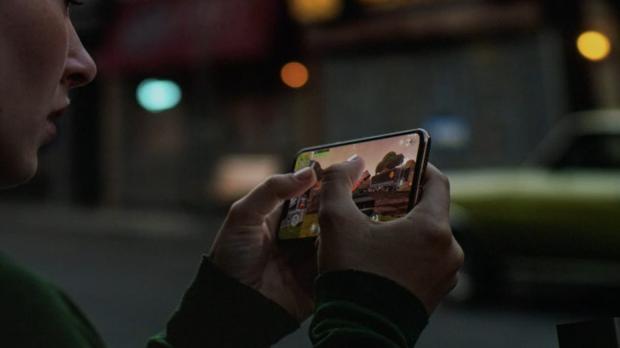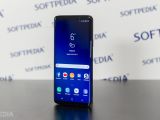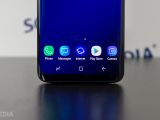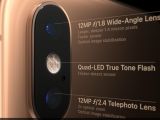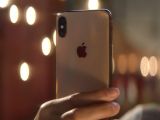Apple has refreshed its iPhone lineup with three different models, including a new 5.8-inch device that’s a direct successor to the iPhone X launched last year.
While the iPhone XC and the iPhone XS Max seem to be getting all the attention right now, iPhone XS is also a key part of Apple’s product portfolio for several reasons.
First and foremost, it’s a continuation of last year’s generation, and then, it comes with dimensions that are likely to meet the demands of more buyers than in the case of its bigger brother.
However, iPhone XS isn’t such a big overhaul from the original iPhone X, and in terms of looks, very little has changed. And like it happened with its predecessor, it’s a rival to the smaller model of Samsung’s latest flagship series, in this case, the Galaxy S9.
iPhone XS and Galaxy S9 are currently the leaders of two different worlds, coming with the absolute best combination of hardware and software. They are pretty much the top choices for everyone looking for a phone right now, at least until the arrival of the Pixel 3 next month.
When put side by side, each has its own advantages and drawbacks, and in the following paragraphs we’re going to discuss them to help you make a better purchase.
Design and display
Samsung Galaxy S9 is currently one of the most exquisite phones on the market, and while this may be subjective, the high-quality build is pretty obvious.
With glass front and back, the S9 boasts dimensions that also make it extremely comfortable to use at all times - 147.7 x 68.7 x 8.5 mm (5.81 x 2.70 x 0.33 in). It tips the scales at only 163 grams, so despite being rather slippery because of the glass on the back, it’s easy to carry around.
With a 5.8-inch screen with small bezels and without a notch, the S9 boasts one of the best displays on the market, which proves once again why Samsung Display is currently number one in this field.
Apple’s new iPhone XS, on the other hand, is very similar to the iPhone X and comes with little changes in terms of looks. The notch is still there, as Apple continues to bet big on Face ID, and glass is still being used on the back, which allows the device to offer wireless charging.
The 5.8-inch display, also made by Samsung, likely excels in responsiveness, colors, and brightness, as it was case of the original model. Needless to say, it’s also slippery, as it’s the case of all glass phones, but its dimensions are what could make it a top-selling product this year – Apple hasn’t provided the exact sizes, but they are very similar to the ones of iPhones X, namely 143.6 x 70.9 x 7.7 mm (5.65 x 2.79 x 0.30 in) and 174 grams weight.
The good news is that 3D Touch is there, despite rumors that Apple could give up on this feature, and the wide color gamut display continues to be offered.
| Galaxy S9 | iPhone XS | |
|---|---|---|
| Display type | Super AMOLED | Super AMOLED |
| Size | 5.8 inches | 5.8 inches |
| Resolution | 1440 x 2960 pixels, 18.5:9 ratio | 1125 x 2436 pixels, 19.5:9 ratio |
| Other features | Gorilla Glass 5 No notch Curved edges Always-on display |
Gorilla Glass 6 (unconfirmed) Notch 3D Touch True tone |
CPU, RAM, and storage
When it comes to hardware specifications, it’s pretty clear why these models are the leaders of their worlds.
The Galaxy S9 is available with a choice of two processors, namely the Snapdragon 845 and the Exynos 9810. Apple’s model comes with the all-new A12 chip developed by Apple in-house and supposed to offer better performance and longer battery life. Specifics in this regard, however, hasn’t been provided, but it shouldn’t take long until more information is shared.
The S9 is equipped with 4GB RAM and a maximum of 256GB storage, and for the first time, iPhone XS matches its specs. The new-generation iPhone has also been upgraded to 4GB RAM and it also offers 256GB storage – the 512GB storage version is available on the bigger siblings in both cases.
Given Apple’s obsession for software optimizations, there is a good chance that iPhone XS is actually faster than the Galaxy S9, especially given the similar specs.
As mentioned, this is the first time Apple offers the same amount of RAM as its Android rival, so the difference here will be made by the processor and the software powering the device.
| Galaxy S9 | iPhone XS | |
|---|---|---|
| CPU | Exynos 9810 Qualcomm Snapdragon 845 |
Apple A12 |
| RAM | 4GB | 4GB |
| Storage | 64/128/256 GB | 64/256/512 GB |
Cameras
Samsung Galaxy S9 itself has received an upgrade from its predecessor in this department, but this time, there’s a big difference as compared to the new iPhone.
While Samsung has decided to offer the dual-camera configuration available exclusively on the bigger Galaxy S9+, Apple brought it to the 5.8-inch model too, just like it was the case of the original iPhone X.
With dual-12MP cameras, the iPhone XS is clearly the better option, especially because it offers features like the 2X optical zoom that isn’t available on the Samsung phone. It also features adjustable depth for bokeh effect on portrait shots.
On the other hand, the S9 can only be ordered with a single-lens camera that boasts 12 megapixels and bet big on technologies like dual pixel to take better pictures in low-light. Which one is better is a thing we’ll discover soon in our in-depth review of the iPhone XS.
| Galaxy S9 | iPhone XS | |
|---|---|---|
| Rear camera | 12 megapixels (f/1.5-2.4, 26mm, 1/2.5", 1.4µm, OIS, dual pixel PDAF) |
12MP (f/1.8, 28mm, 1.4µm, OIS, 6-element lens, Focus Pixels) and 12MP (f/2.4, 6-element lens OIS) |
| Front camera | 8 megapixels (f/1.7, 25mm, 1/3.6", 1.22µm, AF) |
7 megapixels (f/2.2, 32mm) |
Other features
There was a time when Samsung’s models offered many more features than iPhones, but with Apple’s new-generation models, it looks like the gap between the two has been substantially reduced.
First and foremost, both come with fast charging and wireless charging, which are features that iPhone users have only dreamed about until last year when the first iPhone X hit the shelves. On the other hand, the S9 comes with DeX support, which allows it to convert to a fully-featured Android PC when connected to a bigger screen.
The S9 boasts a 3,000 mAh battery, and Apple hasn’t released the specs of its new model. However, both devices should be able to get you through the day with moderate usage, and given the fast charging is now available on both, this shouldn’t be a problem anyway.
Both the iPhone XS and Galaxy S9 come with stereo speakers, but on the other hand, only the latter has a fingerprint sensor. Apple continues to bet big on facial recognition, which is bundled into the notch.
Samsung also offers facial recognition and an iris scanner, but it doesn’t use 3D sensing camera, and this means the level of accuracy isn’t as high as in Apple’s case.
The bottom line
At first glance, Samsung Galaxy S9 and iPhone XS are like two drops of water and probably the most interesting part of this comparison is that Apple has finally managed to match the specs of its Android rival.
A couple of years ago, Android devices were launching with double the amount of RAM available on iPhones, and it looks like Apple has finally understood that upgrading its devices in this department is essential for features like multitasking and AR-powered cameras.
The iPhone XS will sell well, there’s no doubt about that, and there’s also a good chance that it’ll beat the Galaxy S9 anyway. In fact, the S9 itself has been selling well below expectations since its debut earlier this year, but this is mostly the result of the device being very similar to its predecessor.
When it comes to buying a flagship, however, making a decision at this point seems to be much harder than initially thought. Based specifically on a spec comparison, no matter which one you choose, you still get a similar feature package.
In the end, as I said in the other comparison of the bigger models, I believe it’s all just a matter of going either Android or iOS. Depending on which platform you like more, you can also choose between the iPhone XS and the Samsung Galaxy S9.

 14 DAY TRIAL //
14 DAY TRIAL // 